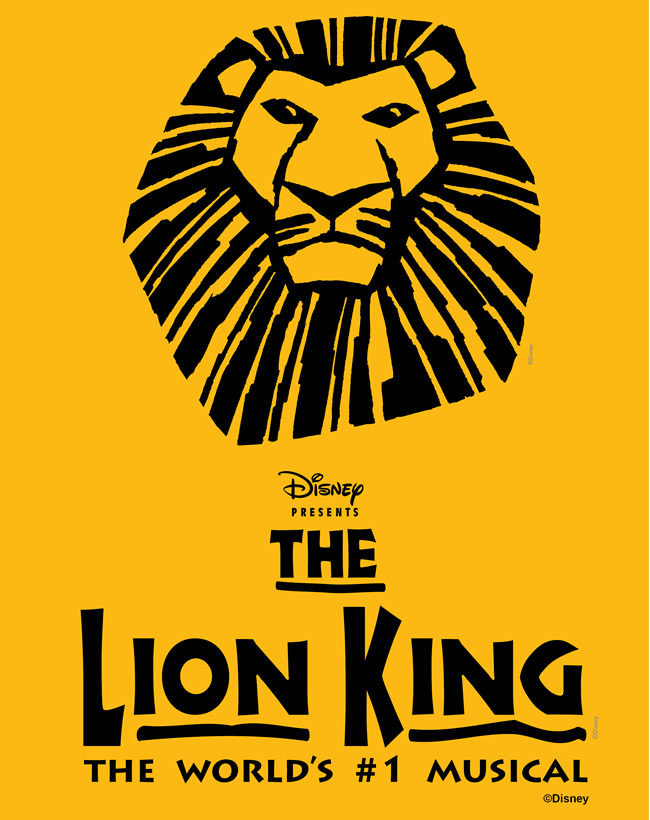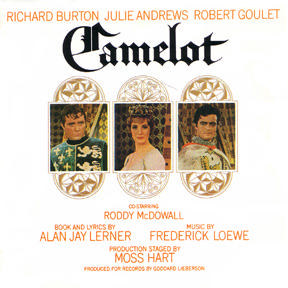
Goodspeed Musicals 2011 production.
Credit: Diane Sobolewski
The history of the musical (musical comedy, musical play) begins with the first applications of music to theatre. We have innumerable instances of composers providing ‘incidental’ music, such as Beethoven’s incidental music for Goethe’s play Egmont, Mendelssohn’s incidental music for A Midsummer Night’s Dream, or Grieg’s music for Ibsen’s Peer Gynt. All of that, however, places music in the background, supporting the drama.
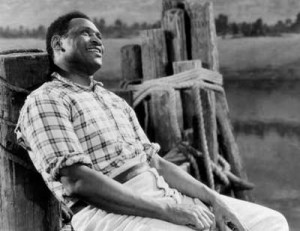
Paul Robeson as Joe in the 1936 production
We’ll start in the 1920s, with Jerome Kern’s groundbreaking musical Show Boat. Based on Edna Ferber’s book about the lives and loves of three generations of performers traveling up and down the Mississippi putting on shows on their riverboat, the Cotton Blossom.
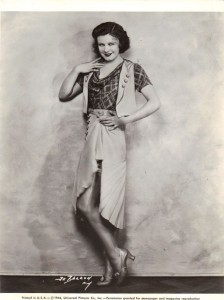
Ginger Rogers in Girl Crazy, 1930
Show Boat (Lincoln Center Theater Cast) – Act I: Can’t help lovin’ dat man (Julie, Queenie, Joe, Magnolia, Ensemble)
Show Boat made its debut on Broadway in 1927 and had revivals in 1932, 1946, 1971, 1983, and as recently as 1994, It made its West End debut in London in 1971, with its latest revival in 2016.
The other showstopper in Show Boat was ‘Ol’ Man River.’ Sung by Joe, the stevedore on the show boat, the song is also a rare solo for bass.
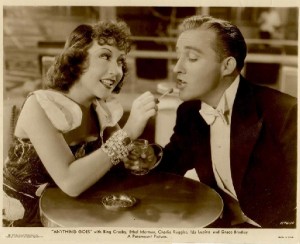
Ethel Merman and Bing Crosby in Anything Goes
Brother George and Ira Gershwin moved their way up the popular musical world of New York, with George’s music matched by Ira’s inspired lyrics. Their 1930 musical Girl Crazy was the stage debut for Ethel Merman and made Ginger Rogers a star. In ‘I Got Rhythm,’ Merman’s distinctive strident sound was shown off to great effect.
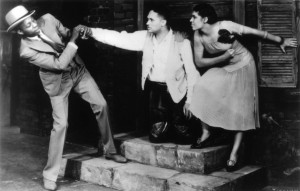
John Bubbles, Todd Duncan and Anne Brown in Porgy and Bess (1935)
Anything Goes, Act I: Anything Goes
Anything Goes (Off-Broadway Cast Recording, 1962) – Act I: I Get a Kick Out of You (Reno)
Anything Goes, Act I: You’re the top (original 1934 version)
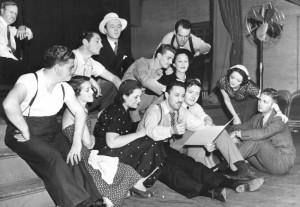
Blitzstein and the cast of The Cradle Will Rock (1937)
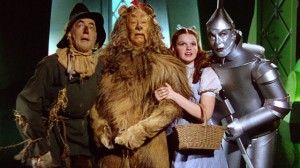
Scarecrow (Ray Bolger), the Cowardly Lion (Bert Lahr), Dorothy (Judy Garland), and the Tin Man (Jack Haley) in The Wizard of Oz
In 1937, Mark Blitzstein’s The Cradle Will Rock, brought the reality of the Depression and the fight for unionization to the stage.
We close the 1930s with a definitive musical that never appeared on Broadway but had its debut as a film. The 1900 children’s novel by L. Frank Baum, The Wonderful Wizard of Oz, had been made into musicals before, starting in 1902, but it was the 1939 film with music by Herbert Stothart, that has become our standard.
And so, with a colourful fantasy, we leave the musical of the 1920s and 1930s. We’ll pick up again after WWII!

